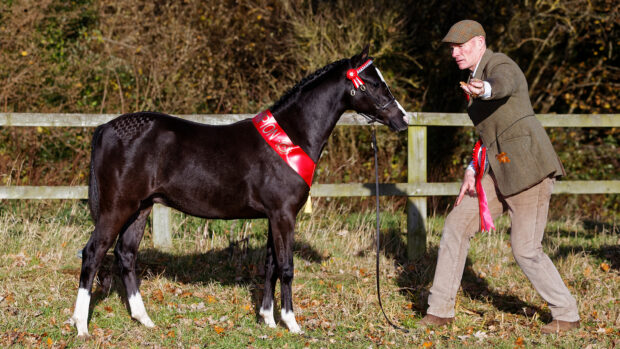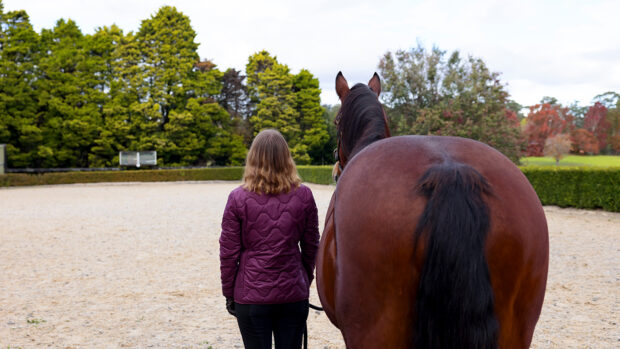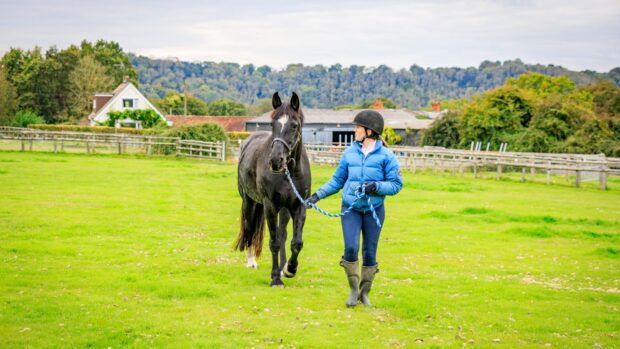Persuading a horse to pee on command is not a standard stable management skill, but can be extremely useful. While vets usually take blood samples, urine is sometimes needed for testing — and “house trained” horses make for huge savings on bedding.
Karen Coumbe MRCVS says that the easiest way for a vet to get a urine sample is to catheterise the horse.
“Horse urine is quite thick, so I like to trot them up first to stir things up; a bit like shaking a carton of apple juice,” she adds. “However, this procedure isn’t something you’d particularly want to do with a stroppy colt unless you had to, because when you put the catheter in, your head’s rather near the kicking zone.”
Instead, you can capitalise on a horse’s natural instinct to mark his territory with the “right” smell.
“The best solution is to put the horse in a stable with a fresh, deep bed, preferably straw,” says Karen. “When you put them on a new bed like that, the first thing they usually do is roll in it and the second is to pee.
“Another technique that sometimes works is to turn on a tap in the hope that running water sparks a reaction.”
Pony breeder Kevin Foreman provides the equivalent of a litter tray. His stables are all floored with rubber matting but have highly absorbent bedding placed over just a quarter of the area.
“I use wood fibre made into pellets, which doesn’t scatter like shavings,” he says. “The ponies use that area as their loo because the urine doesn’t splash back, and they’re happy to lie on the matting.”
Show jumping trainer Carol Mailer goes one step further. All her horses — mares and geldings — will pee into a bucket on request. She teaches them from the start by waiting to catch them at the right moment and then rewarding them with a carrot. Her horses are now happy to perform when she approaches with the bucket and as soon as they have finished, look for their reward.
“It saves an enormous amount on shavings,” says Carol, who reckons that most horses get the idea within a couple of weeks.
Some people are concerned that such training will prevent a horse from going if you’re not around, but Karen Coumbe doesn’t believe that there’s a risk.
“If a horse needs to pee, he will,” she insists.
It is worth putting a layer of bedding in the bucket to prevent noisy or uncomfortable splashback, which may well frighten the horse and put him off.
The old grooms’ method of persuading a horse to pee was to whistle softly while shaking straw underneath him.
“It does work,” says stable lass Jenny Blunt, who was told of the technique by her grandfather, a former farrier.
“You need to whistle and hiss between your teeth at the same time. It takes practice and a bit of patience, but I find it usually does the trick when my horses come back from work.”
- This feature was first published in Horse & Hound (19 August 04).

 Get up to 19 issues FREE
Get up to 19 issues FREE
 UK’s No1 weekly for Horses for Sale
UK’s No1 weekly for Horses for Sale
 Latest results and reports
Latest results and reports
 TO SUBSCRIBE CLICK HERE
TO SUBSCRIBE CLICK HERE





